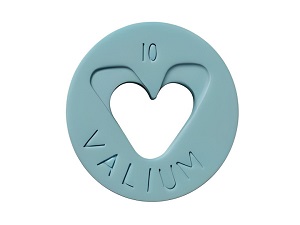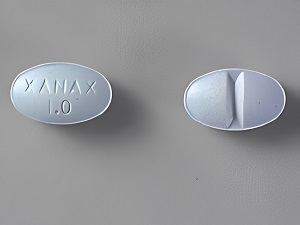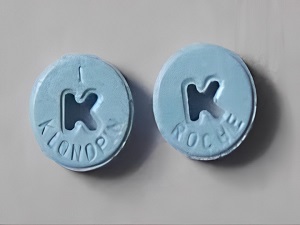Fear is a primal emotion designed to keep us safe from harm. However, when fear becomes excessive, irrational, and disrupts daily life, it can manifest in different ways, including phobias and anxiety disorders. Let’s delve into the intricacies of fear, phobias, and anxiety disorders to understand their differences and how they impact individuals’ lives.
The Nature of Fear
Fear is a natural response to perceived threats or danger, triggering a cascade of physiological and psychological reactions. It serves as a protective mechanism, activating the “fight-or-flight” response to help us respond to potential dangers. Key aspects of fear include:-
- Immediate Response: Fear elicits an immediate response, activating the sympathetic nervous system and releasing stress hormones such as adrenaline and cortisol.
- Physical Symptoms: Fear can manifest physically, leading to rapid heartbeat, sweating, trembling, shortness of breath, muscle tension, and heightened arousal.
- Cognitive Effects: Fear can affect cognitive processes, leading to heightened alertness, narrowed focus on perceived threats, and difficulty concentrating on non-threatening stimuli.
- Emotional Response: Fear is accompanied by emotional reactions such as anxiety, apprehension, dread, or panic, depending on the intensity and nature of the perceived threat.
Understanding Phobias
A phobia is an intense and irrational fear of a specific object, situation, activity, or stimulus. Phobias can be categorized into specific phobias, social phobia (social anxiety disorder), and agoraphobia. Here are key aspects of phobias:-
- Specific Triggers: Phobias are triggered by specific stimuli or situations, such as heights (acrophobia), spiders (arachnophobia), flying (aviophobia), enclosed spaces (claustrophobia), or social situations (social phobia).
- Excessive Fear Response: Phobias elicit an exaggerated fear response disproportionate to the actual threat posed by the trigger. Individuals with phobias may experience intense anxiety, panic attacks, avoidance behavior, or distress when exposed to the phobic stimulus.
- Impact on Daily Life: Phobias can significantly impact daily functioning, social interactions, occupational activities, and quality of life if left unmanaged. Avoidance of phobic triggers may lead to limitations in activities or opportunities for personal growth.
- Treatment Options: Phobias can be effectively managed through exposure therapy, cognitive-behavioral therapy (CBT), desensitization techniques, relaxation strategies, and medication in some cases. Therapy aims to help individuals confront and reframe their irrational fears to reduce anxiety and improve coping skills.
Exploring Anxiety Disorders
Anxiety disorders encompass a range of conditions characterized by excessive worry, fear, or anxiety that persists over time and interferes with daily functioning. Common anxiety disorders include generalized anxiety disorder (GAD), panic disorder, social anxiety disorder (SAD), and specific phobias. Key aspects of anxiety disorders include:-
- Chronic Anxiety: Anxiety disorders involve persistent or chronic anxiety that is disproportionate to the actual threat or situation. Individuals with anxiety disorders may experience excessive worry, anticipatory anxiety, and difficulty controlling anxious thoughts.
- Variety of Symptoms: Anxiety disorders can manifest with a variety of symptoms, including physical symptoms (e.g., rapid heartbeat, sweating, muscle tension), cognitive symptoms (e.g., racing thoughts, difficulty concentrating), emotional symptoms (e.g., apprehension, irritability), and behavioral symptoms (e.g., avoidance behaviors, compulsive rituals).
- Impact on Functioning: Anxiety disorders can significantly impact various aspects of life, including work, relationships, social interactions, academic performance, and overall well-being. Chronic anxiety may lead to fatigue, insomnia, difficulty concentrating, and impaired decision-making.
- Treatment Approaches: Anxiety disorders are treatable with a combination of psychotherapy, medication, lifestyle changes, and coping strategies. Cognitive-behavioral therapy (CBT), exposure therapy, relaxation techniques, and medication (e.g., selective serotonin reuptake inhibitors, benzodiazepines) are commonly used interventions.
Distinguishing Fear, Phobia, and Anxiety
- Fear: Fear is a normal and adaptive response to perceived threats or danger, activating the body’s fight-or-flight response to cope with immediate challenges.
- Phobia: A phobia is an intense and irrational fear of a specific object, situation, or stimulus, leading to avoidance behavior and distress when exposed to the phobic trigger.
- Anxiety Disorder: Anxiety disorders involve chronic or excessive anxiety that persists over time, interferes with daily functioning, and may manifest with a variety of physical, cognitive, emotional, and behavioral symptoms.
Common Misconceptions About Fear, Phobias, and Anxiety
- Fear as Weakness: Fear is not a sign of weakness but a natural survival mechanism that helps us respond to threats and adapt to challenges.
- Phobias as Trivial: Phobias are not trivial fears but intense and distressing experiences that can significantly impact an individual’s life and well-being.
- Anxiety Disorders as Temporary: Anxiety disorders are not temporary worries but chronic conditions that require appropriate management and support for long-term well-being.
Coping Strategies for Fear, Phobias, and Anxiety
- Education and Understanding: Learn about fear, phobias, and anxiety to understand their nature, triggers, and impact on mental health.
- Seeking Professional Help: Consult mental health professionals for assessment, diagnosis, and personalized treatment plans tailored to your needs.
- Therapeutic Interventions: Explore therapeutic interventions such as cognitive-behavioral therapy (CBT), exposure therapy, relaxation techniques, and mindfulness practices.
- Medication Management: Consider medication options prescribed by healthcare providers for symptom management and anxiety reduction.
- Self-Care Practices: Incorporate self-care practices such as regular exercise, adequate sleep, healthy nutrition, stress management, and leisure activities into your routine.
Which medicine is sufficient for anxiety treatment ?
Certainly, here’s a breakdown of medications commonly used for anxiety treatment:-
Selective Serotonin Reuptake Inhibitors (SSRIs):
- Examples: Sertraline (Zoloft), Escitalopram (Lexapro), Fluoxetine (Prozac)
- Benefits: Effective for various anxiety disorders, fewer side effects compared to older antidepressants.
- How They Work: Increase serotonin levels in the brain, regulating mood and reducing anxiety.
Serotonin-Norepinephrine Reuptake Inhibitors (SNRIs):
- Examples: Venlafaxine (Effexor XR), Duloxetine (Cymbalta)
- Benefits: Effective for generalized anxiety disorder (GAD) and certain other anxiety disorders, also helps with depression.
- How They Work: Increase serotonin and norepinephrine levels, improving mood and reducing anxiety.
Benzodiazepines:
- Examples: Alprazolam (Xanax), Diazepam (Valium), Lorazepam (Ativan)
- Benefits: Rapid relief of anxiety symptoms, useful for short-term or acute anxiety episodes.
- How They Work: Enhance the effect of a neurotransmitter called gamma-aminobutyric acid (GABA), which reduces anxiety and promotes relaxation.
Buspirone (BuSpar):
- Benefits: Less risk of dependence compared to benzodiazepines, effective for generalized anxiety disorder (GAD).
- How It Works: Acts on serotonin receptors, reducing anxiety without causing sedation or dependence.
Beta-Blockers:
- Examples: Propranolol (Inderal), Atenolol (Tenormin)
- Benefits: Used for performance anxiety (e.g., public speaking anxiety), physical symptoms of anxiety (e.g., rapid heartbeat, tremors).
- How They Work: Block the effects of adrenaline, reducing physical symptoms of anxiety like rapid heartbeat and trembling.
It’s important to note that medication effectiveness can vary based on individual factors, and a healthcare professional should determine the most suitable medication and dosage for each person’s specific needs. Therapy and lifestyle changes may also complement medication for comprehensive anxiety relief.
Conclusion
In conclusion, fear, phobias , and anxiety disorders are complex phenomena that impact individuals’ emotional, cognitive, and behavioral well-being. Understanding the differences between fear, specific phobias, and anxiety disorders is essential for accurate diagnosis, effective treatment, and improved mental health outcomes. By fostering awareness, seeking support, practicing coping strategies, and promoting mental wellness, individuals can navigate fear and anxiety more effectively, leading to a healthier and fulfilling life.











Leave a comment